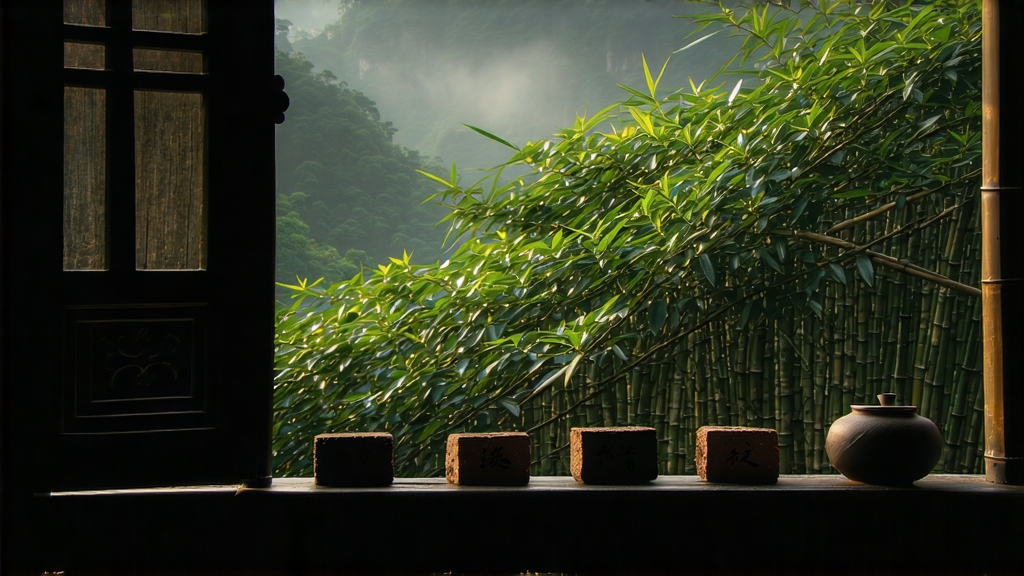
Tucked away in the humid, karst-pocked mountains of southern Guangxi, Liu Bao tea has spent four centuries quietly fermenting while its better-known cousins—Pu-erh, Keemun, Lapsang Souchong—dominated the global conversation. To the uninitiated, Liu Bao is simply another dark brick from China, yet one sip reveals a liquid time-capsule: forest floor, dried longan, and a cooling camphor finish that lingers like a memory. This is the story of how a frontier trading tea became a collector’s obsession, and how you can unlock its velvet depths in your own kitchen without a single piece of jade-green porcelain.
-
From Border Barter to Imperial Tribute
In 1585 the Ming court, desperate for war horses, opened the “Tea-Horse Road” that threaded from Guangxi’s Cangwu County to the markets of northern Burma. Liu Bao village—little more than a cluster of stilt houses above the Liu River—was the last stop where pressed tea could be loaded onto bamboo rafts before the dangerous gorge descent. Local Yao and Han farmers discovered that the humid raft journey actually improved the tea; the slow steam and river mist softened the leaf and deepened its color. Within two generations, Liu Bao bricks were accepted as currency in Kunming and, by the Qing Qianlong era (1736–1795), had become an imperial tribute item praised for “dispelling miasma” in the southern frontier. Caravans carried it north, monks carried it to Tibet, and European missionaries tucked small cakes into their cassocks, introducing the first smoky-sweet notes of Guangxi to Parisian salons in 1858. -
One Leaf, Three Faces
Unlike Pu-erh’s binary division into sheng (raw) and shou (ripe), Liu Bao offers a spectrum of three recognized styles, each defined by the degree of post-fermentation:
- Qing Cha (light fermentation, 15–25 %): the “greenest” face, aged in tall bamboo baskets for 3–5 years. Liquor is tawny amber with a hint of raw cacao and orchid.
- Zhuan Cha (medium fermentation, 30–45 %): the classic export grade developed in the 1950s for Hong Kong dim-sum restaurants; pressed into 500 g “old-man” bricks, it steeps a clear crimson cup with notes of jujube and wet slate.
- Chen Cha (deep fermentation, 55–70 %): the collector’s darling, left in loose piles inside underground clay jars for 15–30 years. The leaf turns jet black with russet edges; the infusion is ink-thick, tasting of black-forest honey, camphor bark, and the mineral snap of a lightning strike.
-
Crafting the Microbial Symphony
Liu Bao’s magic lies in a two-stage fermentation that predates Pu-erh’s wo-dui by at least a century. The process begins in late April when the indigenous Da Ye cultivar is picked with three open leaves and a bud still flushed with spring dew. After a brief indoor withering, the leaves are wok-fired at 280 °C for exactly 90 seconds—long enough to kill green enzymes but short enough to preserve surface microbes. While still warm, they are rolled into tight cords on bamboo trays, then heaped 40 cm deep inside hemp-lined baskets. Here the “wet-piling” begins: workers sprinkle river water drawn from the Liu River’s granite bed, maintaining 65 % humidity and 48 °C for 12 hours. The pile is turned every 30 minutes, allowing Aspergillus niger, Blastobotrys adeninivorans, and a rare yeast Kodamaea ohmeri to bloom. After 36 hours the leaf temperature drops spontaneously, signaling the first microbial movement is complete. The half-fermented tea is sun-dried for one day, then moved to wooden lofts above horse stables where it absorbs ambient yeasts for decades. The stable environment—steady 24 °C, 78 % humidity, and the faint scent of camphor wood—creates Liu Bao’s signature “betel-nut” aroma that cannot be replicated in climate-controlled warehouses. -
The Bamboo Basket Time-Machine
Once fermentation is judged complete (anywhere from 6 months to 30 years), the tea is steamed for three minutes and pressed into cylindrical baskets woven from mature mao bamboo. Each basket holds 37–40 kg of tea and is lined with a single